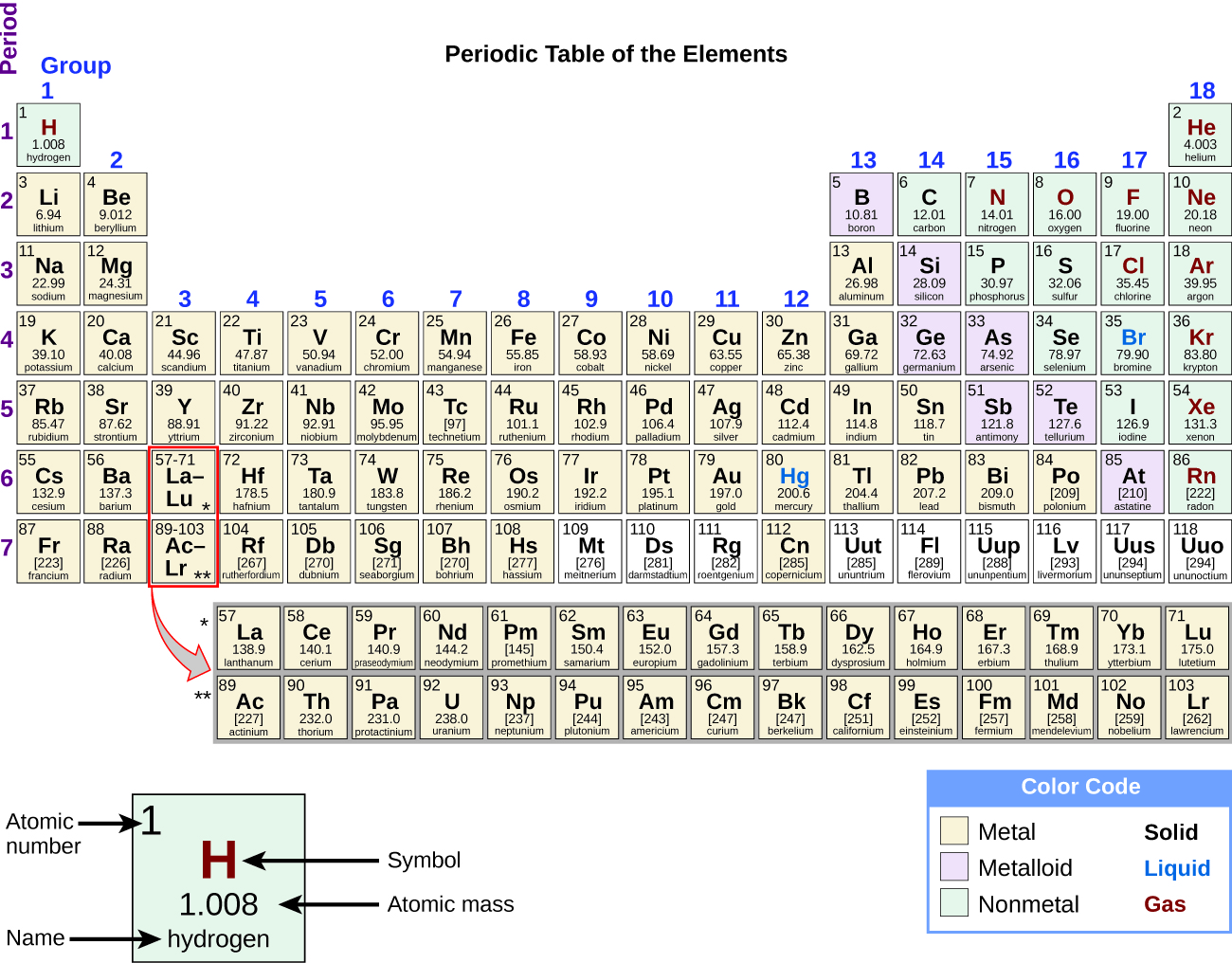Arsenic (As) is a grey metalloid that has the atomic number 33 in the periodic table. It is located in Group 15 of the periodic table. It has the symbol As. Atomic number of the element arsenic is 33. It means one atom of arsenic has 33 protons in its nucleus. Atomic mass of arsenic is 74.92. It is found as solid at 20 ℃ temperature. Arsenic (As) Atomic Data for Arsenic (As) Atomic Number = 33 Atomic Weight = 74.9216 Reference E95: Isotope: Mass: Abundance: Spin: Mag Moment: 75 As. Arsenic is a chemical element with the symbol As and atomic number 33. Arsenic occurs in many minerals, usually in combination with sulfur and metals, but also as a pure elemental crystal. Arsenic is a metalloid. It has various allotropes, but only the gray form, which has a metallic appearance, is important to industry.
Our editors will review what you’ve submitted and determine whether to revise the article.
Join Britannica's Publishing Partner Program and our community of experts to gain a global audience for your work!Arsenic (As), a chemical element in the nitrogen group (Group 15 [Va] of the periodic table), existing in both gray and yellow crystalline forms.
| atomic number | 33 |
|---|---|
| atomic weight | 74.921595 |
| melting point | |
| (gray form) | 814 °C (1,497 °F) at 36 atmospheres pressure |
| density | |
| (gray form) | 5.73 g/cm3 at 14 °C (57 °F) |
| (yellow form) | 2.03 g/cm3 at 18 °C (64 °F) |
| oxidation states | -3, +3, +5 |
| electron config. | 1s22s22p63s23p63d104s24p3 |
History
Arsenic was known in the form of certain of its compounds long before it was clearly recognized as a chemical element. In the 4th century bce Aristotle wrote of a substance called sandarache, now believed to have been the mineralrealgar, a sulfide of arsenic. Then, in the 1st century ce, the writers Pliny the Elder and Pedanius Dioscorides both described auripigmentum, a substance now thought to have been the dyestuff orpiment, As2S3. By the 11th century ce three species of “arsenic” were recognized: white (As4O6), yellow (As2S3), and red (As4S4). The element itself possibly was first observed in the 13th century by Albertus Magnus, who noted the appearance of a metal-like substance when arsenicum, another name for As2S3, was heated with soap. It is not certain, however, that this natural scientist and scholar actually observed the free element. The first clearly authentic report of the free substance was made in 1649 by Johann Schroeder, a German pharmacist, who prepared arsenic by heating its oxide with charcoal. Later, Nicolas Lémery, a French physician and chemist, observed the formation of arsenic when heating a mixture of the oxide, soap, and potash. By the 18th century, arsenic was well known as a unique semimetal.
Occurrence and distribution

The abundance of arsenic in the Earth’s crust is about five grams per ton; the cosmic abundance is estimated as about four atoms per million atoms of silicon. The element is widely distributed. A small amount exists in the native state, in 90–98 percent purity, generally in association with such metals as antimony and silver. Most, however, is combined in more than 150 different minerals, as sulfides, arsenides, sulfoarsenides, and arsenites. Mispickel, or arsenopyrite, FeAsS, is among the most common of arsenic-bearing minerals; others are realgar, As4S4; orpiment, As2S3; loellingite, FeAs2; and enargite, Cu3AsS4. Arsenic oxide is also common. Wps download mac. Most commercial arsenic is recovered as a by-product of the smelting of copper, lead, cobalt, and gold ores.
Only one stable isotope of arsenic, that of mass 75, occurs in nature. Among the artificial radioactive isotopes is one of mass 76, which has a half-life of 26.4 hours. Arsenic-72, -74, and -76 have been used in medical diagnostic procedures.
Commercial production and uses
Metallic arsenic forms when arsenopyrite is heated at 650–700 °C in the absence of air. The arsenic in arsenopyrite and the arsenic impurities in other metal ores unite readily with oxygen when heated in air, forming the easily sublimed oxide, As4O6, also known as “white arsenic.” The vapour of the oxide is collected and condensed in a series of brick chambers and later purified by resublimation. Most arsenic is prepared by carbon reduction of the arsenious oxide dust thus collected.
World consumption of metallic arsenic is relatively small, only a few hundred tons per year. Most of what is consumed comes from Sweden. It is used in metallurgical applications because of its metalloid properties. About one percent arsenic content is desirable in the manufacture of lead shot, for example, because it improves the roundness of the molten drops. Bearing alloys based on lead are improved in both thermal and mechanical properties when they contain about 3 percent arsenic. A small amount of arsenic in lead alloys hardens them for use in batteries and cable sheathing. Small concentrations of arsenic improve the corrosion resistance and thermal properties of copper and brass. Elemental arsenic is also used in bronzing and in pyrotechnics.Very highly purified arsenic finds applications in semiconductor technology, where it is used with silicon and germanium, as well as in the form of gallium arsenide, GaAs, for diodes, lasers, and transistors.
Because arsenic has a range of oxidation states from -3 to +5, it can form a variety of different kinds of compounds. Among the most important commercial compounds are the oxides, the principal forms of which are arsenious oxide (As4O6) and arsenic pentoxide (As2O5). Arsenious oxide, commonly known as white arsenic, is obtained as a by-product from the roasting of the ores of copper, lead, and certain other metals as well as by the roasting of arsenopyrite and arsenic sulfide ores. Arsenious oxide provides the starting material for most other arsenic compounds. It is also utilized in pesticides and serves as a decolourizer in the manufacture of glass and as a preservative for hides. Arsenic pentoxide is formed by the action of an oxidizing agent (e.g., nitric acid) on arsenious oxide. It comprises a major ingredient of insecticides, herbicides, and metal adhesives.
Arsine (AsH3), a colourless poisonous gas composed of arsenic and hydrogen, is another familiar arsenic compound. The gas, also called arsenic hydride, is produced by the hydrolysis of metal arsenides and by the reduction by metals of arsenic compounds in acidic solutions. It has been used as a doping agent for semi-conductors and as a military poison gas. Arsenic compounds of particular importance in agriculture are arsenic acid (H3AsO4) and such salts as lead arsenate (PbHAsO4) and calcium arsenate [Ca3(AsO4)2], which are useful for sterilizing soils and controlling pests, respectively.
Arsenic also forms numerous organic compounds, as for example tetramethyl diarsine, (CH3)2As―As(CH3)2, used in preparing the common desiccant cacodylic acid. Several complex organic compounds of arsenic have been employed in the treatment of certain diseases, such as amebic dysentery, caused by microorganisms.
- key people
- related topics
Help desk. clone wars adventures. Atomic Number of Arsenic is 33.
Chemical symbol for Arsenic is As. Number of protons in Arsenic is 33. Atomic weight of Arsenic is 74.921595 u or g/mol. Melting point of Arsenic is 613 °C and its the boiling point is 613 (Subl.) °C.
» Boiling Point» Melting Point» Abundant» State at STP» Discovery YearAbout Arsenic
Arsenic is a semi-metal and a chemical element known since the old times. It has got its name after the Greek word for orpiment. In very small amounts it can be found on the surface of earth, but generally it is obtained from minerals like arsenopyrite and others. It micro doses, arsenic is essential to all living things, but it is carcinogenic even in very low doses. This element can be found in some seafood like prawns. Some compounds of arsenic have very strong poisonous properties, and they are used as poison for rodents and insects. This chemical element has applications in medicine, mainly for its great toning properties. Arsenic also plays a role of semiconductor doping agent and is used in pyrotechnics, producing solid-state devices, and so on.
Uses of Arsenic
Arsenic, a silver-grey, semi-metal element with the symbol As, is used in semiconductors. And mostly used in alloying with lead. It can be employed with silicon and germanium. Elemental arsenic is mainly used in bronzing and pyrotechnics. Arsenious oxide, also known as white arsenic, is used in the manufacture of glass. Arsenic trioxide is employed as a precursor to forestry products as well as in electronics, paints and making glass. Arsenic compounds are used as wood preservatives. They also can be used in some medical applications and in agriculture too. Besides, they are preferred for military purposes. Arsine, an odorless, colorless, poisonous gas with the formula AsH3, employed as a doping agent for semiconductors.
Compounds with Arsenic
Arsenic Atomic Number And Mass
- As4O6: Arsenious oxide
- As2O3: Arsenic trioxide
- As2O5: Arsenic pentoxide
- GaAs: Gallium arsenide
- AsH3: Arsenic hydride (Arsine)
- H3AsO4: Arsenic acid
- PbHAsO4: Lead hydrogen arsenate
- [Ca3(AsO4)2]: Calcium arsenate
Chemical Properties Of Arsenic
Properties of Arsenic Element
| Atomic Number (Z) | 33 |
|---|---|
| Atomic Symbol | As |
| Group | 15 |
| Period | 4 |
| Atomic Weight | 74.921595 u |
| Density | 5.776 g/cm3 |
| Melting Point (K) | 1090 K |
| Melting Point (℃) | 613 °C |
| Boiling Point (K) | 887 K |
| Boiling Point (℃) | 613 (Subl.) °C |
| Heat Capacity | 0.329 J/g · K |
| Abundance | 1.8 mg/kg |
| State at STP | Solid |
| Occurrence | Primordial |
| Description | Metalloid |
| Electronegativity (Pauling) χ | 2.18 |
| Ionization Energy (eV) | 9.7886 |
| Atomic Radius | 115pm |
| Covalent Radius | 119pm |
| Van der Waals Radius | 185 |
| Valence Electrons | 5 |
| Year of Discovery | ca. 1250 |
| Discoverer | Albertus Magnus |
What is the Boiling Point of Arsenic?
Arsenic Atomic No
Arsenic boiling point is 613 (Subl.) °C. Boiling point of Arsenic in Kelvin is 887 K.
What is the Melting Point of Arsenic?
Arsenic melting point is 613 °C. Melting point of Arsenic in Kelvin is 1090 K.
How Abundant is Arsenic?
Abundant value of Arsenic is 1.8 mg/kg.
What is the State of Arsenic at Standard Temperature and Pressure (STP)?
State of Arsenic is Solid at standard temperature and pressure at 0℃ and one atmosphere pressure.
Hey u/McGrizIIy, Please ensure that your post follows the required request format for this sub-reddit to avoid it being removed. The format is as follows: App Name: Description: Playstore Link: Mod Features: I am a bot, and this action was performed automatically. Please contact the moderators of this subreddit if you have any questions or concerns. Hey guys, the 10.0.0 mod doesnt work anymore, there is a prompt to update the app - so the mod doesnt work anymore. We need a mod for ExpressVpn 10.2.2. App Name: ExpressVPN. Description: VPN. Playstore Link: Mod Features: Free Trial or Unlimited Premium.  Deezer is considered like a better music stream modded app than Spotify 'cause of the offline mode, something that the modded Spotify apk doesn't provide. Anyways, there are plenty of recent Deezer versions, but sometimes they're not working fully, e.g. When you try to go offline and want to listen to your downloaded music, it just won't play.
Deezer is considered like a better music stream modded app than Spotify 'cause of the offline mode, something that the modded Spotify apk doesn't provide. Anyways, there are plenty of recent Deezer versions, but sometimes they're not working fully, e.g. When you try to go offline and want to listen to your downloaded music, it just won't play.
When was Arsenic Discovered?
Arsenic was discovered in ca. 1250.

Comments are closed.